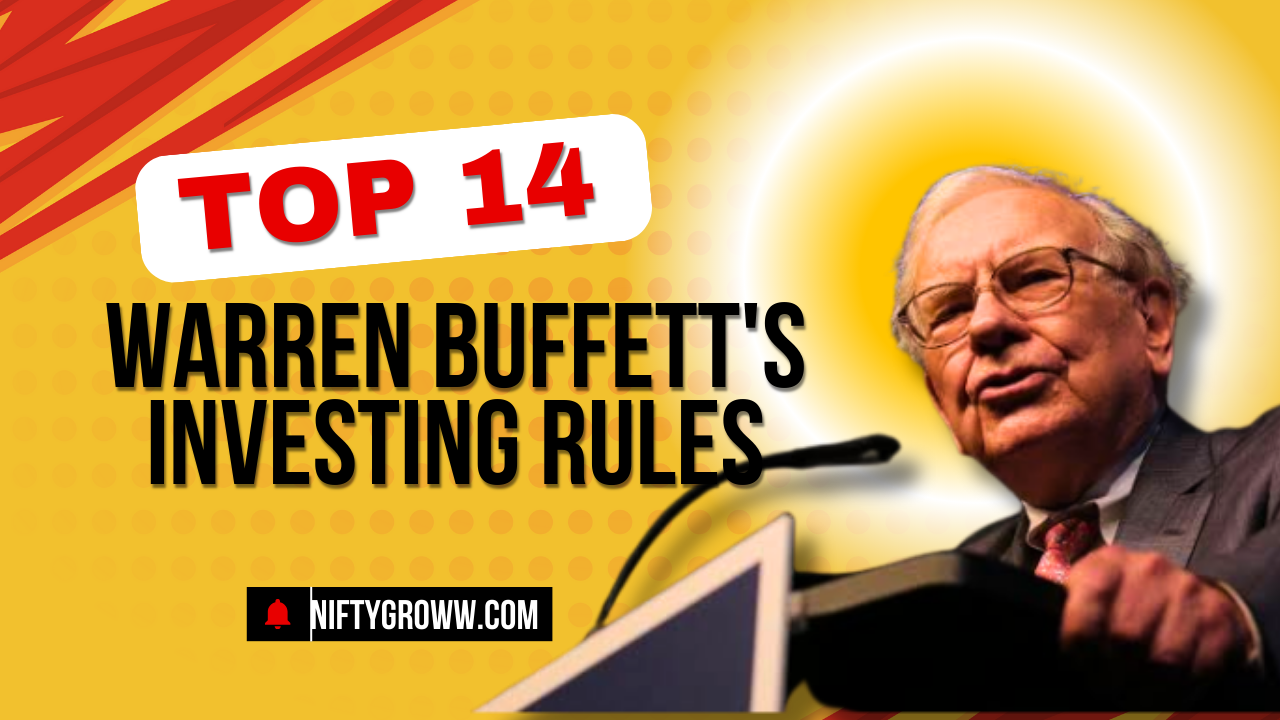Warren Buffett, the “Oracle of Omaha,” is synonymous with investing success. With a net worth exceeding $100 billion, his strategies have stood the test of time. But what exactly are the Warren Buffett investing rules that fueled his legendary returns? In this guide, we’ll break down his 14 financial principles, explain why they work, and show you how to apply them to your portfolio.

Why Warren Buffett Investing Rules Matter (And Why You Should Care)
Warren Buffett’s approach isn’t about quick wins or market timing—it’s about patience, discipline, and understanding value. His rules emphasize businesses with enduring competitive advantages, honest leadership, and financial health. Let’s dive into the 14 rules that shaped his empire.
Rule 1: Gross Profit Margin of 40% or Higher
A high gross profit margin signals pricing power and operational efficiency. Buffett loves companies like Apple (AAPL) and Coca-Cola (KO), which maintain margins above 40%. This metric shows a business can thrive even during economic downturns.
Pro Tip: Compare margins within industries. Tech firms often have higher margins than retailers.
Rule 2: Return on Equity (ROE) of 15% or Higher
ROE measures how effectively a company uses shareholders’ money. A 15%+ ROE indicates management is generating strong returns. For example, See’s Candies, a Buffett-owned company, consistently delivered ROE above 25%.
Rule 3: Persistently Growing Earnings Per Share (EPS)
Buffett avoids erratic earnings. Look for companies like Moody’s (MCO) with a 10-year EPS growth streak. Steady growth often reflects a loyal customer base and scalable operations.
Rule 4: Management Team That Is Honest and Competent
Buffett famously said, “When a management with a reputation for brilliance tackles a business with a reputation for bad economics, it’s the reputation of the business that remains intact.” He prioritizes leaders like Ajit Jain (Berkshire’s insurance guru) who act like owners.
Resource: Read Berkshire’s Annual Letters to see how Buffett evaluates management.
Rule 5: Own a Business You’re Comfortable Holding Long-Term
Would you keep the stock if the market shut down for a decade? Buffett’s stake in American Express (AXP) since 1963 proves his commitment to businesses he understands and trusts.
Rule 6: Low Debt-to-Equity Ratio
Excessive debt kills companies during crises. Buffett favors firms like Apple, which maintains a debt-to-equity ratio below 1.5.
Rule 7: A History of Dividend Payments
Dividends reflect financial stability. Coca-Cola has paid dividends for 60+ years, making it a Buffett staple. Note: The original list had a typo (“PAYMEN”), but the intent is clear.
Rule 8 & 14: Strong Balance Sheet (Yes, It’s Listed Twice!)
A strong balance sheet means ample cash, minimal debt, and liquid assets. Berkshire Hathaway (BRK.A) holds over $140 billion in cash—Buffett’s “financial fortress” for weathering storms.
Why the repetition? It’s likely intentional. Buffett prioritizes financial resilience above all else.
Rule 9: Invest in Businesses You Understand
Buffett avoids tech startups (until Apple). Stick to your “circle of competence.” If you can’t explain the business model in 2 sentences, skip it.
Rule 10: A Business With a Moat
A “moat” is a competitive edge—like Coca-Cola’s brand or Amazon’s logistics. Moats protect profits from rivals.
Resource: Learn about moats in The Little Book That Builds Wealth.
Rule 11: Buy Undervalued Businesses
Buffett’s mentor, Benjamin Graham, taught him to hunt for “dollars selling for fifty cents.” See how he bought Bank of America (BAC) at a discount during the 2011 crisis.
Rule 12: Don’t Be Afraid to Walk Away
In 2000, Buffett avoided dot-com stocks despite FOMO. His patience paid off when the bubble burst.
Rule 13: Ensure Adequate Cash Flow
Cash flow fuels growth and dividends. Buffett’s acquisition of Dairy Queen highlighted its consistent cash generation.
How to Apply Warren Buffett Investing Rules Today
- Screen stocks using metrics like ROE and profit margins (try Yahoo Finance).
- Study management via earnings calls and annual reports.
- Practice patience—wait for the right price.
Internal Link: Explore our guide on Value Investing Basics for more strategies.
Conclusion: Master Warren Buffett Investing Rules for Lifelong Wealth
Warren Buffett’s rules aren’t about complexity—they’re about clarity. Focus on durable businesses, honest leaders, and margin of safety. As Buffett says, “The stock market is designed to transfer money from the active to the patient.” Start small, think long-term, and let compounding work its magic.
Your Turn: Which of these rules resonates most with you? Share your thoughts below!





